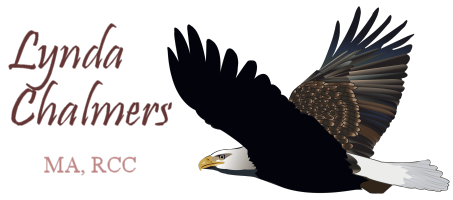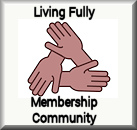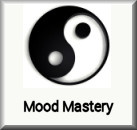Mastering Your MInd
Today we are going to look inside and what we can do about what is going on there when creating our best life. We know that our energy, our physical health, our relationships – they all play a part in our emotional management and whether we do what we say we want to do. But by far, the tool that we need to master is our mind. That is today’s topic.
It is a great time to be alive because of all we know and are learning about the brain. The brain is a great machine that looks to maximize its job with as little effort as possible. What that means is that there is a lot of automation going on inside of you. For instance, if you have a pattern of negativity about yourself or your work that does not serve you well but you have been rehearsing those thoughts for years, you will have what psychology calls automatic thoughts that pop up in your brain. Your brain is saying, in effect, we have been here before – I know what to do. Sometimes the brain is trying to protect you as well as using little energy but these are old messages. In order to live fully, we need to get a handle on our thoughts and actions in order to manage our emotions.
Sometimes  a visual of a triangle can be helpful. It looks like a 3 sided triangle where thoughts are on one side of the triangle, feelings on another side and actions are on the other side. I am not saying, don’t feel bad because of course that is not how to change our feelings. But I am saying, that in order to make a change in our feelings we have the opportunity to make a change in our thinking and our actions. That does help our feelings. Notice they are all attached in this triangle so when those 2 – our thoughts and our actions change it makes a change in our feelings. You know this intuitively, but most people don’t realize that they can be responsible for this triangle every day.
a visual of a triangle can be helpful. It looks like a 3 sided triangle where thoughts are on one side of the triangle, feelings on another side and actions are on the other side. I am not saying, don’t feel bad because of course that is not how to change our feelings. But I am saying, that in order to make a change in our feelings we have the opportunity to make a change in our thinking and our actions. That does help our feelings. Notice they are all attached in this triangle so when those 2 – our thoughts and our actions change it makes a change in our feelings. You know this intuitively, but most people don’t realize that they can be responsible for this triangle every day.
Right now give it a try, think about something that is concerning you. Notice the change in your feelings. You may also notice that if you go for a walk on a sunny day or go to the gym your feelings change. If you make a connection with a friend, your thoughts change too; it is truly automatic. So that is the framework of how the brain works from past experience and operates on automation.
Let’s look at what you can do with this in order to make big changes in how you master your life. You can gain control and learn to generate and create your thoughts, not relying on your automatic reaction. How can we do that?
1. The fact that the brain tries to optimize with the least amount of energy, takes what it already knows or believes is familiar and gives you an automatic thought, feeling & action gives you the first clue of how to make a change. The biggest way to sustain the automation is with your self talk. The brain has learned by years of repetition. What do we already know? The fact that the brain is going by past learning is good news -that means that you can unlearn, also by repetition. You can rewire your brain by constantly being aware of your thoughts. What am I thinking right now? Where is my attention focussed? Is this helpful or not helpful to me? Is it important to me today? Remember as we repeat our negative thoughts the brain brings them forward and we are on the wheel that brings us down. But remember the positive aspect of this – as we think of the positive repetitively we are moving the brain to focus on the positive automatically. Look at times when you can learn this discipline. For instance, we wait a lot in our lives – is there a time that you can use to focus on what you are thinking and whether it is life giving to you? What about driving? That is a great time to reflect on your thoughts and bring them into alignment with what you want. Do this tactic first.
2. It is important to become aware of your self talk and it’s automatic repetitive messages. You can google 10 cognitive distortions and see which messages are familiar to you. You do have your favourites. There is a tiny grain of truth in these thoughts which is why they slip by and affect us. Take the time to give alternative messages to each of these distortions. Let me give you an example. Mind reading is one of the common cognitive distortions. Our brain says that expression on their face means this (something negative) and we begin to rehearse that. The person could have been thinking about the bad lunch they had but we mind read and personalize it to who we are. How could I respond to my brain when I become aware of these distortions? For this one, I would say that I cannot actually read minds so I can choose to believe whatever I want to. I choose to believe that the person had a bad lunch and their expression means nothing about me. Simplified but you get it. It will take some repetition in order to make a change in each of those automatic distortions.
3. We have already talked about this one but visualization is also one that is important to retrain your brain. Remember to visualize what you want to have happen with colour, sound, emotions. Have fun with this – knowing you are making a difference!
4. Let’s look at action. The third part of the triangle, action is also a very important part of mental health and being at the optimum of our performance during the day. If you take action on a consistent basis, just like repeating positive thoughts, it teaches your mind to do that. So behave in ways that are positive for you. Teach yourself, I’m just going to be confident for no other reason. The more you take positive action, the more your brain is automatically conditioned to understand that’s what we do. We then get caught up in a confidence- competence loop. The brain begins to respond automatically that that is what we do – little energy -let’s do it.
Now what about the times when you get stuck in procrastination and overwhelm and you are having a hard time with thoughts and actions. Here are some steps that are helpful. These need to be done as well as your brain training.
1. Spending the day on Netflix is rarely helpful but we sometimes do it anyway. Forgive yourself and move on. The brain needs an ebb and flow of adrenal alertness and then calm. This means that your level of stress can take you to action but you also need to have a good process such as meditation or gentle stretching to come to calm. It is recommended that you do this once every 50 minutes. Are you taking care of that?
2. When you are paralyzed by stress or anxiety your project needs to be chunked into very small pieces. Write out every detail in very small portions. An example would be: find phone number, plan a time to call, write out one point I would like to get across, repeat, repeat, make call, follow up.
This is the story of YOUR life that you are writing as you either have habits of worry, become negative, procrastinate or in other ways sabotage your dreams. Or you do the work of retraining your brain, becoming more positive and moving towards the person you were meant to be. Have fun on the journey. Go forth and be wonderful in this! Remember your free “not to do list” – Put it to good use today!







